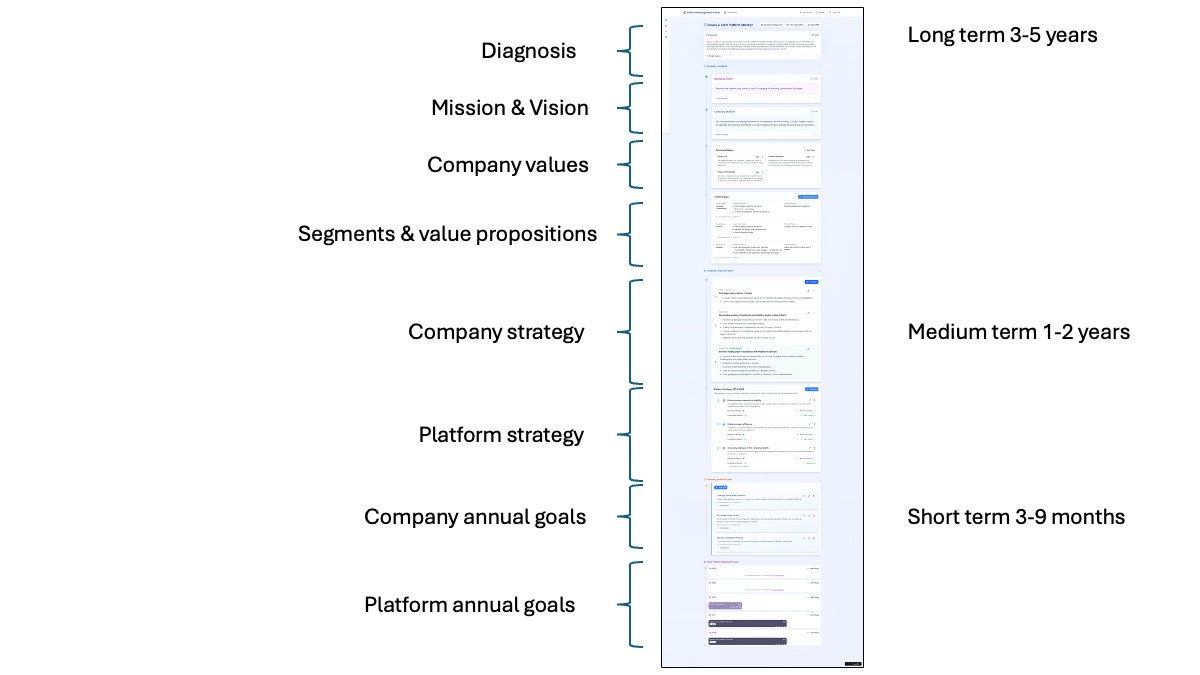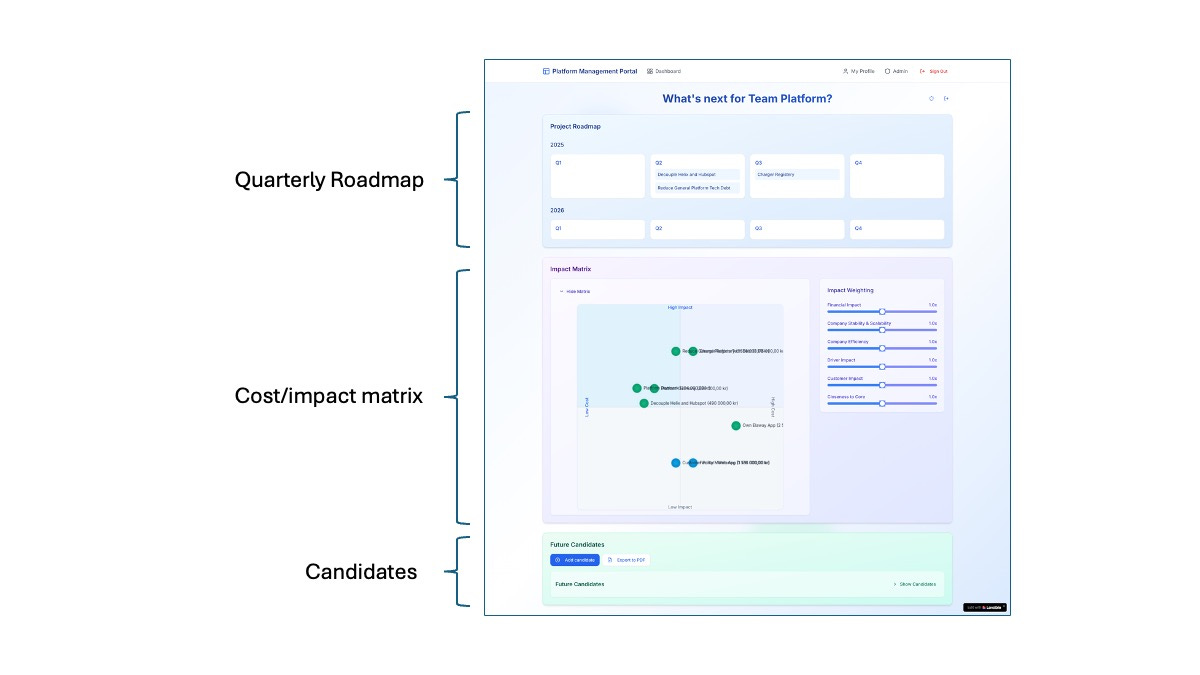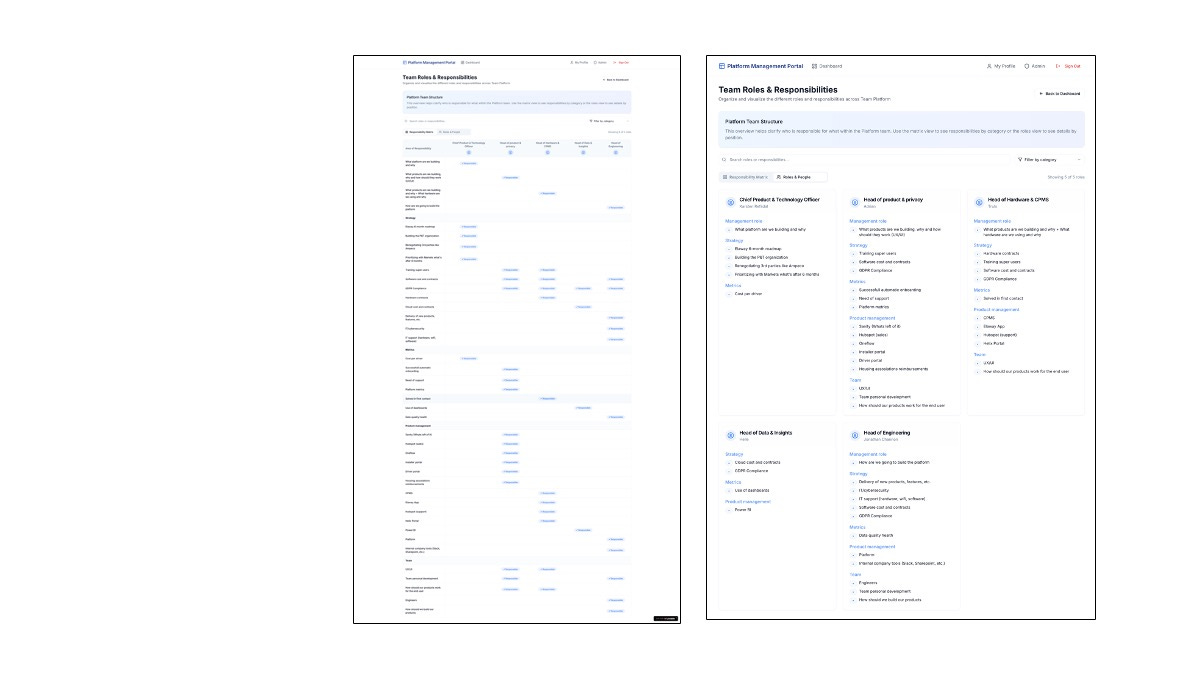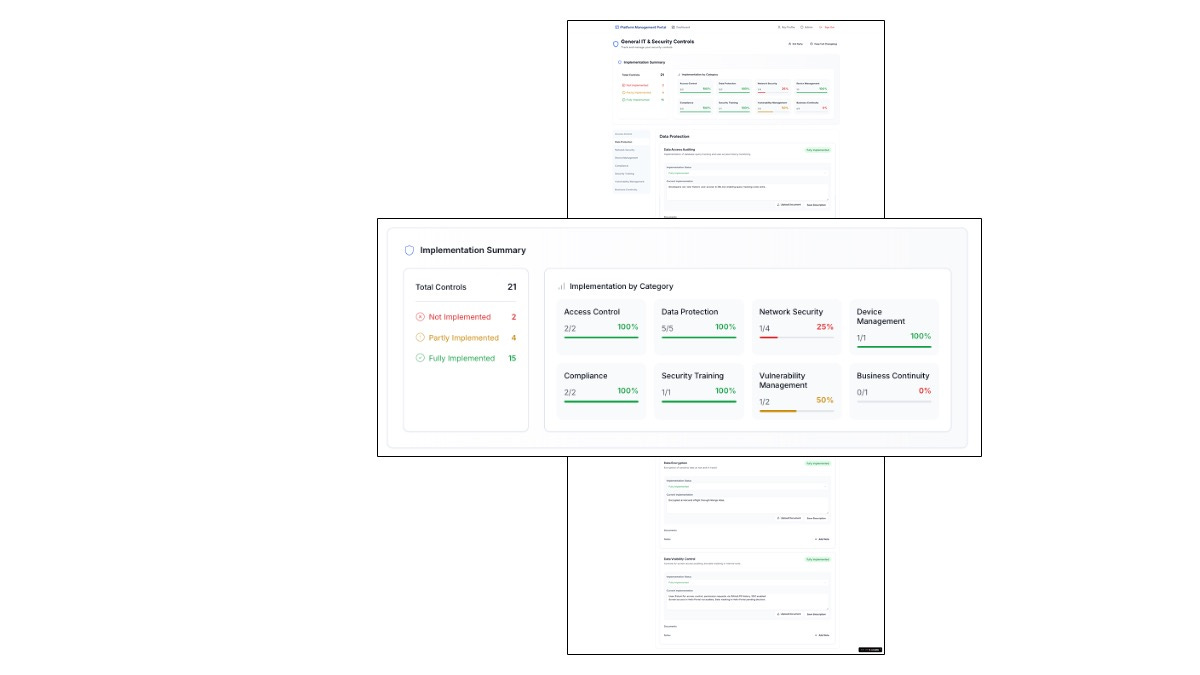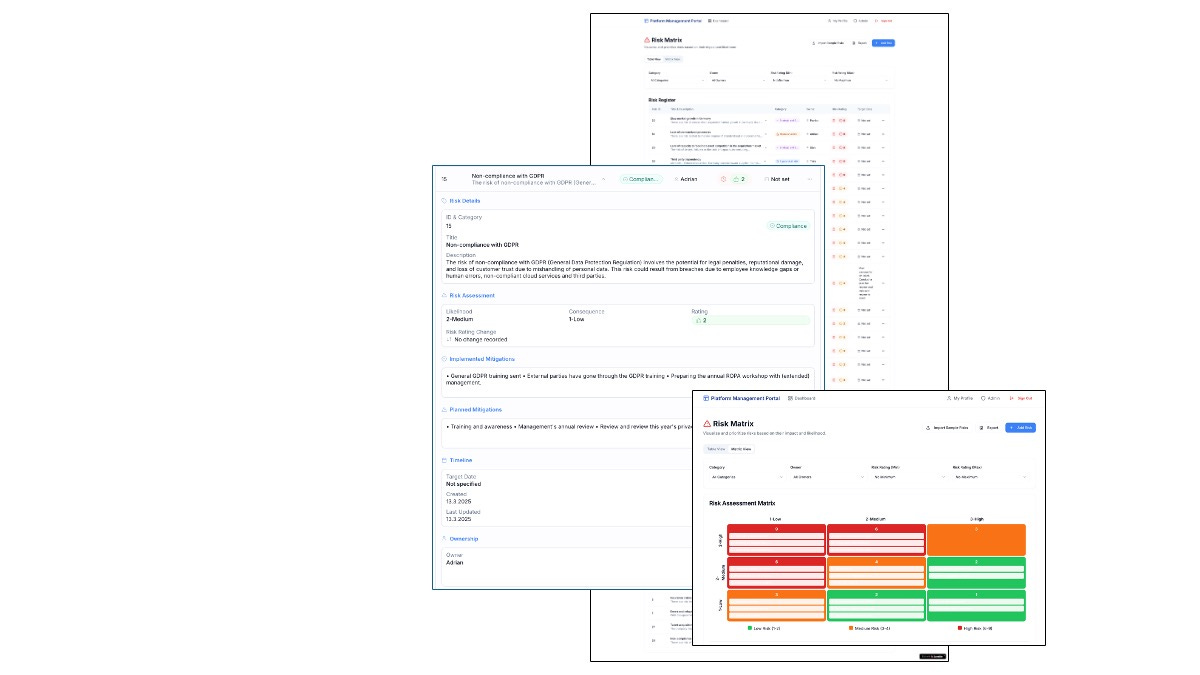Why am I exploring this
For the last five months, I have been fascinated by the tailor-made apps I can create using tools like DataButton and Lovable. That led me to the question, “I wonder if I can build a management portal with apps that can replace my current management stack, save money, and become more efficient as a manager?”
My current management stack looks like this and is compiled by several Excel sheets, PowerPoint, and SAAS solutions like BOB, Vanta, and Notion.
My goal starting this project was to test and answer the following questions:
Could I create a management portal to automate tasks across the management stack?
Could this management portal cut Elaway's SAAS costs?
Could I create a management portal that can “talk to the management stack, asking questions like “does this item in the roadmap align with the company strategy” and “research SAAS pricing on our current SAAS subscription and tell me if we are paying more than the industry average”
Could I create a management portal I trust regarding security and data quality?
And finally, are AI development tools good enough that people in my roles with limited tech/programming skills can build, use, and trust apps like these?
These are the 11 apps I built
Using Lovable, I started prompting and spent around 100 hours exploring this. I have now reached the point where I have 11 fully working apps in my management portal.
The Strategy app
The strategy app helps me easily understand Elaway’s long-term, medium-term, and short-term plans by showing all plans on one page. The longer-term plans are at the top of the page, and the further down you go, the more short-term the plans become.
App value - Not worth the cost of building and maintaining it.
Today, we have this set up in an Excel file. The benefits of moving this into an app are that I can easily export a PDF for consumption and, to a greater extent, lock and administer the content in the app. The app is also easier to read and navigate than the current Excel file.
That said, I do not consider the benefits to outweigh the fact that you would have to build and manage this app. If the tool existed already, I would prefer it to the Excel file.
The prioritization app
The prioritization app was built to help the management team at Elaway evaluate the value of future projects against each other. It works by specifying and evaluating all candidates considered potential projects for the product and technology team at Elaway based on the same factors, such as financial, efficiency, customer, partner, and build cost.
App value - Worth the cost of building and maintaining it.
We could have done this in Excel, but the benefits of using a database in the background and adding a UX/UI layer on top make this app a lot easier to use and understand, both while spacing candidates and while discussing and agreeing upon what the next project for the product and technology department should be for the next quarter.
The delivery tracker
The delivery tracker app was built to replace our Slack channel, where we share the latest features or new products sent to “production”.
App value - Not worth the cost of building and maintaining it.
The Slack channel we have today works perfectly well, and this app adds no additional value to it, given that you would have to build and maintain the app.
The team roles and responsibilities
The team roles and responsibilities app was built to replace our Excel file that detailed all the roles in the product & technology department and their responsibilities.
App value - Not worth the cost of building and maintaining it.
The short answer is that this app did not add any value over what our Excel file already brings, given that you would have to build the app and maintain it.
The platform cost app
The platform cost app was built to replace our Excel file, tracking all costs of the platform we are building and operating. The app looks fancier than the Excel file, but it does not add significant value. In addition, I am not completely trusting the math done in the background.
App value - Not worth the cost of building and maintaining it.
The Excel file we have today works perfectly well, and this app adds no additional value to it, given that you would have to build and maintain the app.
The 3rd party security management app
The third-party security management app was built to replace our $20,000 annual Vanta cost. The app helps us keep an overview of all our SAAS services and their current security compliance.
App value - Worth the cost of building and maintaining it.
Vanta is too complicated and extensive to meet what we need today. So the ability to save $20.000 annually using this simple app built in 2 hours makes it worth creating and maintaining it.
The IT controls app
The IT controls app was built to replace our $20,000 annual Vanta cost. The app helps us keep an overview of all our SAAS services and their current security compliance.
App value - Worth the cost of building and maintaining it.
Vanta is too complicated and extensive to meet today's needs. So, the ability to save $20.000 annually using this simple app, built in 2 hours, makes it worth creating and maintaining.
The risk tracker app
The risk tracker app was built to replace our Excel file to track and manage company risks.
App value - Not worth the cost of building and maintaining it.
The app works perfectly and looks much better than the Excel file, but that’s it. Given that it’s basically a fancy Excel file, it makes more sense to keep using the Excel file that we can trust to work every time and that is bulletproof from a security standpoint.
HR apps.
The HR apps were built to replace our HiBOB costs. The app tries to offer the same things HiBOB does, and it does that to a certain extent.
App value - Not worth the cost of building and maintaining it.
The issues with these apps are straightforward: personal data security trumps everything. From a feature perspective, the app delivers, but I do not trust these apps I have built to be at the security level needed.
Key Takeaways as a Non-Developer
Not Yet Accessible for Non-Developers other than prototyping
Steep learning curve for true understanding:
As someone with no prior coding skills, I still don’t understand how these tools actually build what they build. The inner workings remain obscure.Feels like working in a black box:
When something breaks — or if I want to change something — I have no idea where to look. That’s a major blocker in both development and debugging.
Concerns Around Stability and Security
No transparency into backend logic:
The apps these tools produce can appear functional, but you’re relying entirely on the tool’s judgment for how it handles logic, integrations, and data handling.Hard to evaluate risk:
Without knowing how the app is built, it’s nearly impossible to assess its stability or security. This makes it unsuitable for anything business-critical.
Limited Value for Replacing Everyday Tools
Replacing Excel isn’t always a win:
While it sounds appealing to turn spreadsheets into “apps,” the benefits are marginal unless you're solving a very specific workflow issue. In many cases, the AI-generated app adds more complexity than it removes.Not necessarily more efficient:
For basic data input, tracking, or calculations, sticking with familiar tools like Excel or Sheets may still be faster and more reliable.
Some Potential in Low-Risk, Low-Cost Scenarios
Can reduce SaaS costs in simple use cases:
If you're looking to build an internal tool where uptime and data security aren’t critical, these tools might offer a cost-effective alternative to subscribing to another SaaS product.
The Danger of Building Just to Build
Temptation to overcreate:
The ease of use makes it tempting to build things simply because you can — not because they’re needed.This leads to two major risks:
Wasted time and energy on products or features that don’t solve real problems.
Diluted organizational focus, as teams spend time maintaining and adapting tools that shouldn't exist in the first place.
Constraints are actually helpful:
Limitations often help clarify what’s essential. Without them, the path of least resistance can lead to bloat.
Final Thoughts
AI dev tools are incredibly promising — and evolving fast:
What’s available today is likely the worst these tools will ever be. They’re improving at an incredible pace.But for now, I belive basic coding knowledge is still required:
Until the tools become more intuitive and transparent, a medium-level programming experience is necessary to build anything stable, secure, and truly useful.



